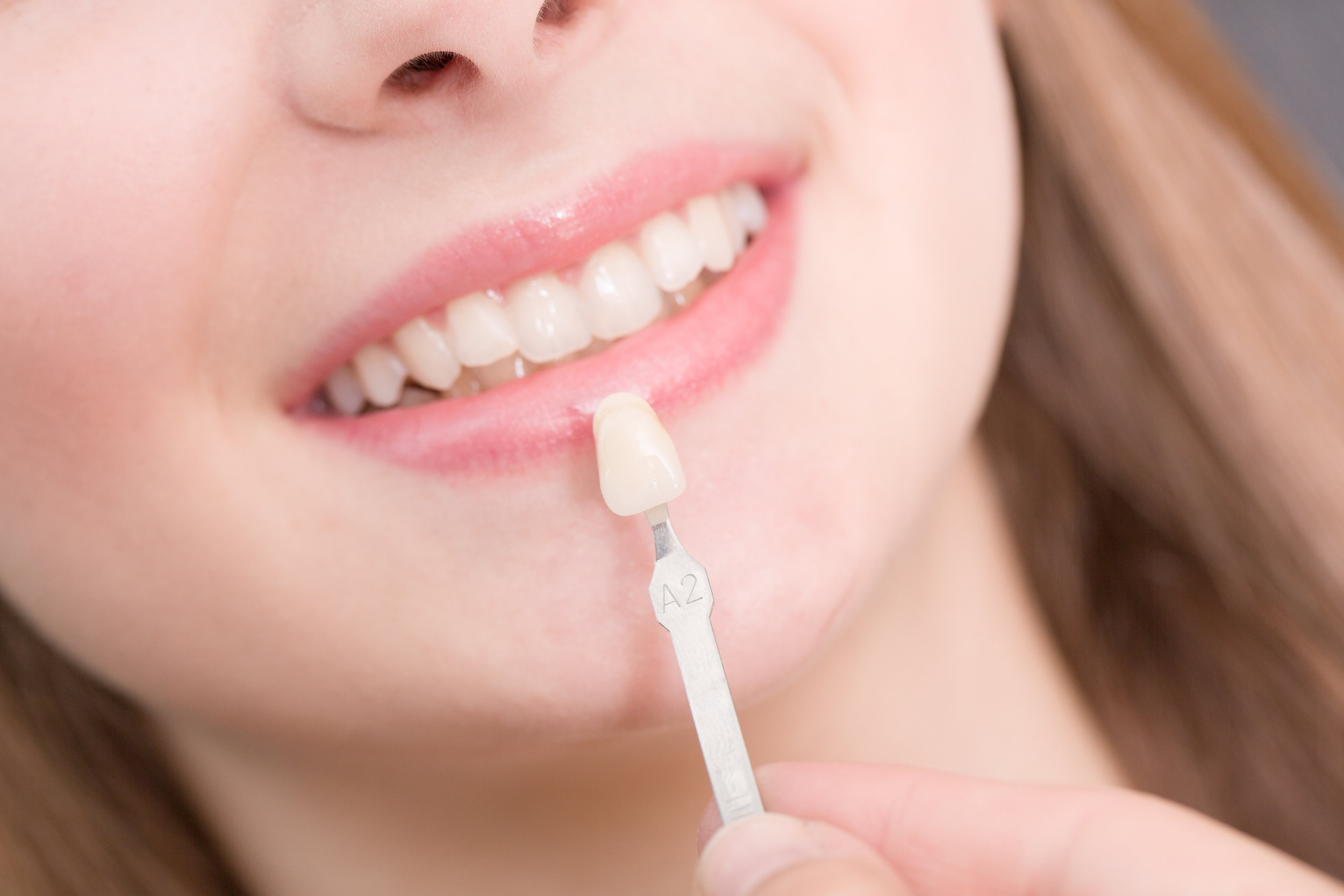
Crowns, Bridges, & Veneers
If you have a damaged or decayed tooth, our dentists can help you choose the best solution. Crowns and bridges are custom-fitted tooth prosthetics that function and look like natural, healthy teeth. Veneers are a less invasive alternative, but may only be a solution for those with slight tooth damage or discoloration. These thin porcelain or resin shells come in customizable colors and are bonded to the surface of your teeth.
Selecting a shade to match natural teeth.
Crowns
A crown, otherwise known as a cap, is custom-fitted to your bite and is placed over your natural tooth or dental implant. We recommend this procedure for those who have an intact tooth, often when the tooth is treated with a root canal.
What are some reasons for getting a crown?
- Fractured or decayed teeth with large areas of the tooth affected
- Fractured fillings or Large fillings prone to fracture
- Tooth had a root canal and is prone to fracture
- Cosmetic purposes
What is the difference between a crown and a bridge?
A bridge is made up of multiple crowns as a unit used to replace missing teeth or large spaces in the mouth. The most common type of bridge consists of two crowns that cover anchoring teeth and have artificial (pontic) teeth to fill the missing space.
Procedure:
We will reduce the problematic tooth for a proper crown fit
An impression will be taken of your bite for crown fabrication
The color of porcelain prosthetics can then be customized
We will fit you with a temporary crown until the lab makes your permanent one
- You will come in again for permanent crown fitting
Bridges
To replace a missing tooth that has neighboring teeth with decay and/or large fillings, or a tooth that has been missing for a long time (i.e., with gum recession around the area), bridges can be a good long term treatment option.
What are some reasons for getting a fixed bridge?
- Replace missing teeth
- Restore ability to chew properly
- Restore a smile
Types of Bridges:
- Traditional — Caps are bonded over teeth that lie on either side of the missing one
- Cantilever — Cap is bonded over a single tooth next to the missing one
- Resin-bonded — Porcelain or plastic teeth with gums that are supported by metal “wings”
What is involved in getting a Bridge?
The process takes at least two visits and multiple teeth can be prepared at a time. The teeth are prepared by shaping the surfaces to allow for thickness of the porcelain or metal. Impressions are sent to the lab for fabrication of the bridge and a shade is selected by you and the dentist. A temporary bridge is fabricated until the permanent one is delivered. On the next visit, teeth will be cleansed and a bonding cement used to adhere the bridge to the teeth and fill the missing space. Bridges can also be made at the same time of an extraction. It is still necessary to have them checked periodically by your dentist.
Veneers
If you’re looking to cosmetically correct or enhance the appearance of one or more teeth, we suggest veneers. They are very thin, porcelain or resin shells that you can customize in color and shape. They are non-invasive and are resistant to future stains. Alternatively, cosmetic bonding can be used for cosmetic enhancement.
Common uses for veneers:
- Chipped or broken teeth
- Misshapen or irregular teeth
- Teeth that do not respond to traditional whitening treatments
What is involved in getting Veneers?
The process takes at least two visits and one to eight teeth can be prepared at a time. Often for cosmetic cases it is best to use a cosmetic "mock up" made by the lab of what the finished veneers will look like to determine if you will be satisfied with their size and shape. With little or no anesthesia, the teeth are prepared minimally by shaping the front surface to allow for thickness of the porcelain. Impressions are sent to the lab for fabrication of the veneers and a shade is selected by you and the dentist. On the next visit, teeth will be cleansed and a bonding cement used to adhere the veneer to the tooth. It is still necessary to have them checked periodically by your dentist.

